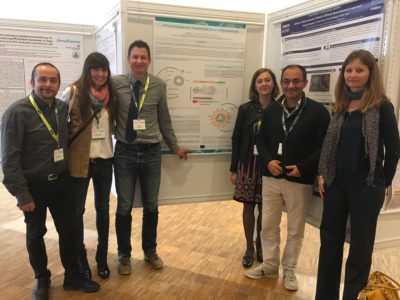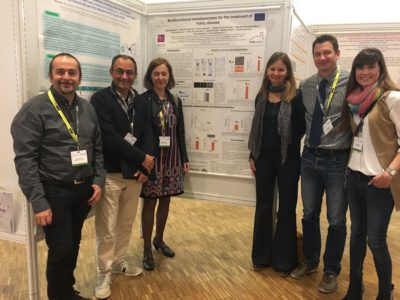Wenn Sie das Gefühl haben, dass unsere Welt immer kleiner wird, liegen Sie gar nicht so falsch. Nanotechnik wird in immer mehr Bereichen unseres Lebens eingesetzt. Das Forschungsteam der BioNanoNet GmbH sorgt dabei für Sicherheit.
Das Wort „Nano“ kommt aus dem Griechischen und ist eine grobe Übertreibung. Es bedeutet nämlich Zwerg. Doch die Teilchen, mit denen Nanotechnologien sich beschäftigen, sind noch wesentlich kleiner. Nur um eine grobe Vorstellung zu bekommen: Ein Nanometer ist ein millionstel Millimeter. Und alles, was größer als 100 Nanometer (also 0,0001 Millimeter) ist, ist schon zu groß für die Nanotechnologien. In diesen Dimensionen arbeiten die heimischen Unternehmen und Forschungsinstitute, die sich im Netzwerk BioNanoNet zusammengeschlossen haben, an innovativen Anwendungen. Unterstützt werden die Entwickler vom NanoSicherheits-Team der BioNanoNet GmbH. Geschäftsführer Andreas Falk präzisiert: „Die Identifikation möglicher Aufnahmewege, die Bewertung des potenziellen Risikos und die fallspezifische Strategie zur Maximierung der Sicherheit von Nanomaterialien gehören zu unseren Kernkompetenzen.“
Tinte aus winzigsten Teilen
Deshalb gibt es eine Reihe internationaler Projekte, in denen BioNanoNet verantwortlich für die Sicherheitsforschung ist. Zum Beispiel das Projekt „Hi-Response“: Nanotinten erlauben extrem hohe Auflösungen und Druckgeschwindigkeiten und eröffnen völlig neue Möglichkeiten im Druckbereich. Was aber im menschlichen Körper passiert, wenn beim Druckvorgang oder beim Kontakt mit nanogedrucktem Material diese winzig kleinen Teilchen eingeatmet, geschluckt oder über die Haut aufgenommen werden, ist noch nicht klar. Das festzustellen, ist der Job von BioNanoNet.
3-D-Druck im Nanobereich
Nanotechnologien ermöglichen auch winzige 3-D-Drucke, die in der Hochtechnologie eingesetzt werden. Zum Beispiel beim Bau von flexiblen Handy-Displays. Aber was passiert, wenn wir über das Display wischen, sich Nanoteilchen lösen, auf unseren Fingern haften bleiben, wir danach unser Essen angreifen und so die Teilchen aufnehmen? Oder Kleinkinder so ein Handy in die Hand bekommen und es in den Mund nehmen? Im Projekt „INSPIRED“ arbeitet die BioNanoNet daran mit, dass Nanoteilchen so eingebaut werden, dass diese zwar ihre Funktion behalten, aber sicher nicht in den menschlichen Körper gelangen.
Effizientere Medikamente
Nanoteilchen können aber auch ganz bewusst in unseren Körper gebracht werden. Im Projekt „Smart-4-Fabry“, an dem BioNanoNet ebenfalls mitwirkt, übernehmen spezielle Nanoteilchen den Transport von Wirkstoffen zielgerecht dorthin, wo sie im Körper gebraucht werden. Damit würde die Arznei wesentlich effizienter eingesetzt, deren vorzeitiger Abbau verhindert und der Organismus entlastet. Das wäre ein riesiger Schritt für die Medizin und die Patientensicherheit.
impuls/


